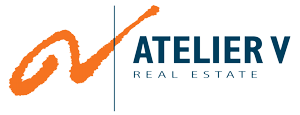Value goes beyond mere cost reduction. While cost cutting can be a part of value creation, it is not the sole determinant. Ultimately, a comprehensive understanding of value considers both price and quality. We future-proof places and spaces for more excellent utility, health & well-being and ROI.
Accommodation management is about strategic business assets that can contribute more than just efficiency. Benefits, costs, effectiveness and efficiency are inextricably linked. They can be distinguished but cannot be separated.
When benchmarking facility costs (NEN-EN 15221 Facility Management), lower costs are often assessed as positive in advance.
However, facility costs are proportional to the other expenses and represent ‘only’ a relatively limited part (8-12%) of the total costs. When one invests (too much) in saving on facility costs without also looking at the benefits side, this can lead to penny-wise pound-foolish activities.
Transformation from cost centre
to enabler for value creation
Suppose the facility costs per m2 at Organisation A are 20% higher than at Organisation B. It may seem that A performs worse than B. But when A scores 5% higher than B on the number of graduates or profit margin and employee satisfaction, then organisation A will, on balance, perform better than B.
A higher occupancy and utilisation rate of the floor space is directly related to the level of the costs per m2, but what are the possible returns from higher efficiency in the broader environment? Battery-caged learn/workplace versus free-range learn/workplace.
Therefore, we look not only at cost optimisation but also especially at the contribution to the benefits, ambitions, and objectives of the organisation, ‘Fit for purpose’. Strategic management of the learning/work environment is more than just steering on effectiveness and efficiency. It is also about manageability, being in control, and the engagement of the occupants in the learning/work environment.
Which organisational goals are pursued, and how does Real Estate/Facility Management/Information Technology contribute to them? Linking and aligning learning/work environment objectives with organisational strategy can easily be mapped using the Strategic Alignment Matrix and the Real Estate Six-pack method.
Quality
The price of a product or service can be misleading without considering its corresponding measure of quality. Price alone does not provide a comprehensive understanding of the value or worthiness of a particular item. Quality refers to the characteristics, features, and performance of a product or service that determine its superiority or excellence.
“A price is meaningless without an adequate measure of quality.”
(Edwards Deming – PDCA cycle)
The benefits are not only incidental revenue from selling real estate or regular rental income but mainly the indirect effects of Facility Management (FM) on the costs and benefits of the other items in the annual financial report. How can FM better facilitate the desired performance and added value? How can it contribute to integral management?
Insight into your own facility costs compared to similar organisations helps you compare yourself to the market average. It answers the question: Do we do things efficiently and in the right (financial) way? Further investigation can be made by examining the contribution to the organisation’s goals and benefits. Are we not only doing things in the right way (efficiency) but also doing the right things (effectiveness)?

